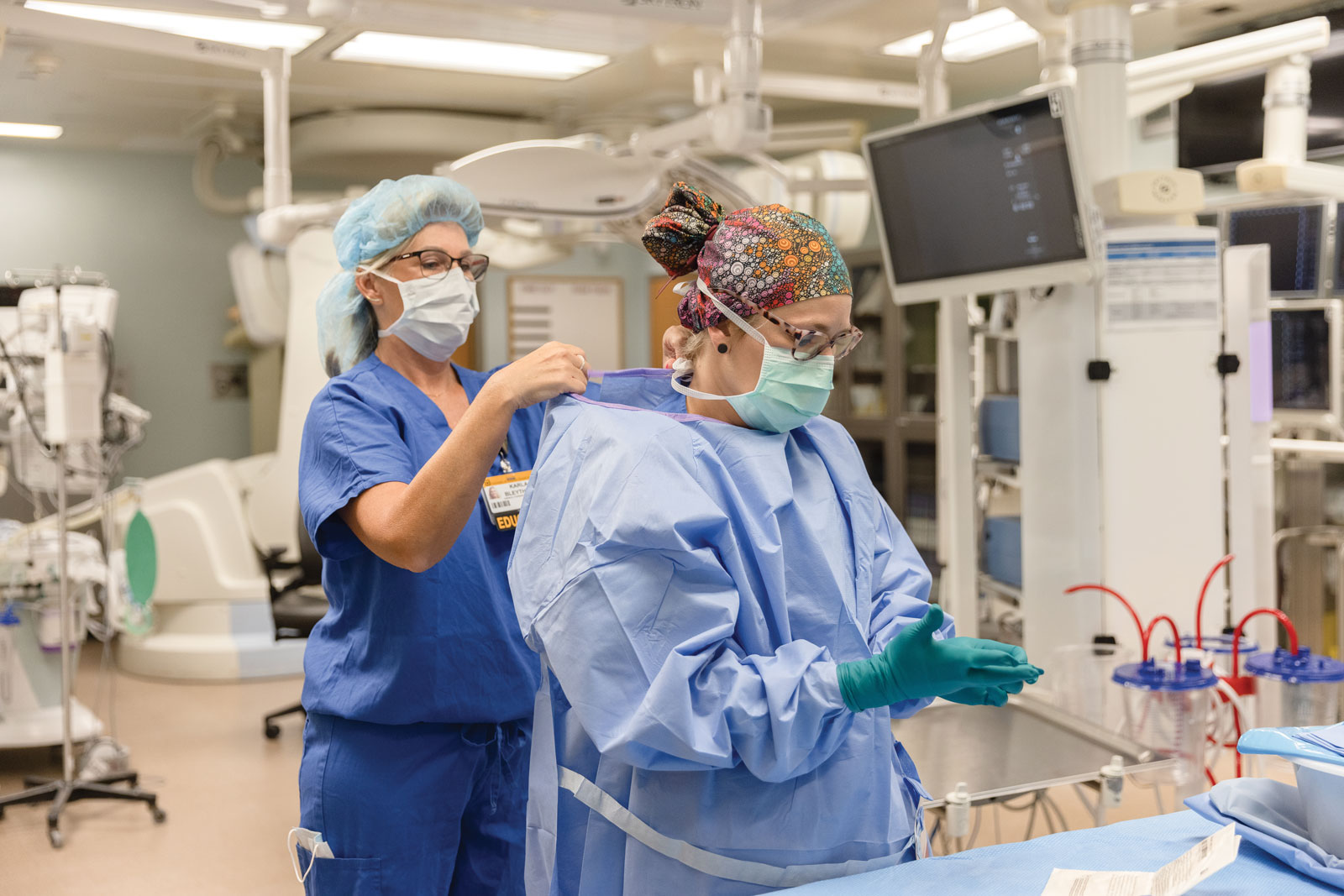
University Hospital’s internal surgical technologist’s program nears its first anniversary.
About a year ago, due to the growing demand in operating rooms, University Hospital established an internal program designed to train current hospital employees interested in becoming surgical technologists.
“The programs that are in Columbia, Rolla, and Lake of the Ozarks have changed their programs to be an associate degree,” says Karla Bleything, the instructor and coordinator for the University’s surgical technologist program. “We had a gap from getting students for a while, and we could really tell a difference. And, also, traveling nurses seem to be more popular with the traveling, and they tend to get better pay.”
To qualify for the program, applicants must have at least six months of employment with the hospital. They go through an interview panel which determines if the applicant is in good standing with the department they are currently in, and it also ensures they have good references, solid attendance, and no disciplinary citation on their record.

“There was an abundance of applicants when we put word out for the internal surgical tech program,” Karla said.
The first set of graduates started as a class of six, while the most recent one had 10 people. In October, another set of applicants will apply for admittance into the program.
The hospital pays for the college classes needed for the program while still working at the hospital. Once students finish classes, they move on to clinicals with Karla that last roughly seven to nine months..
“Classes are taken at Columbia College, and we use an online program so that they can work during the day and do the classes in the evening,” Karla said.
The curriculum includes classes on medical terminology, physiology, and anatomy while the clinical aspect is used to gain hands-on experience.

(photo provided by Andrea Swartz)
Andrea Swartz saw the opportunity the program presents — she applied for the program and was among the first to graduate.
“I wanted to be involved in the change for the patients and actually do something, and after being a patient once myself, I also had an empathic connection to the patients,” Andrea said.
Andrea started in the surgical supply clerk area and later moved up to coordinator for that department. She was responsible for maintaining and ordering supplies and other components for all of the operating rooms’ different service lines.
“It changed my life and saved my life, and [I] wanted to be part of the change and a part of giving back to people in my community like someone did for me,” Andrea said.
For Andrea, the hardest part was not the program itself, but rather juggling the classes on top of a 40-hour work week and being a single mom of four.
“The classes weren’t the hardest for me but knowing how profoundly important a scrub is in the operating room and knowing that what you are doing is an essential for the outcome of the patient,” Andrea said.
For her, the best part on the other side of the program is knowing she’s helping people.
“Being the impact and knowing I am there for the betterment of someone else, in their most vulnerable state and when they are asleep putting their entire life in our hands,” Andrea said. “We are helping them and providing them the opportunity to have a different quality of life.”
For those hesitant about adding the program to their already full-time job and busy lives, Andrea has some words of advice.
“First, know your why; the why you want to do it. If you have the passion to serve and want to make a direct impact on the lives of the people you are serving, being a surgical technologist is a profoundly unique position to be in,” Andrea shared.
This program gives employees of the hospital an opportunity that they never knew they could have.
“My favorite part about the program is getting people that are so indebted for this opportunity and who have never gone to school for it because they could not afford it. They tend to take this seriously and do not want to screw it up,” Karla said.
Once a patient herself, Andrea likes to reflect on the journey she took to becoming a hospital surgical technologist.
“We, as a team, get to give outcomes to people,” Andrea said. “[We] also give hope to them and others, and we just give people their lives back. I was never supposed to be here because my outcome was very dismal when I was a patient, but I had great medical professionals that stuck with me and that’s why I am here today.”




